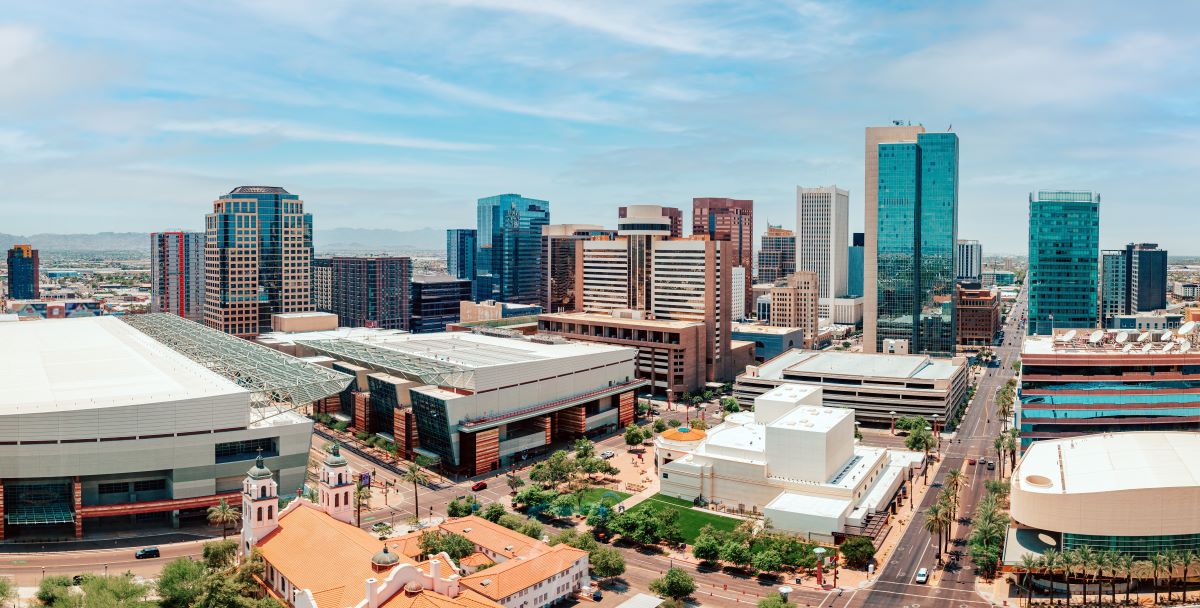Phoenix is facing rising temperatures that challenge daily life, infrastructure, and even health. As one of America’s fastest-warming cities, the heat intensifies annually. Can Mayor Gallego’s initiatives provide the cooling relief the city desperately needs?
Understanding the Core Issues

Phoenix battles the urban heat island effect more intensely each year. Concrete and asphalt absorb and radiate heat, which increases temperatures citywide, stressing energy resources and exacerbating public health risks. This heat isn’t just uncomfortable—it’s dangerous.
Historical Context of Urban Development

Phoenix’s growth from a desert city to a sprawling metropolis has come with significant environmental changes. Over decades, natural landscapes that once cooled the air have been replaced with heat-absorbing urban developments, intensifying the city’s heat island effect.
The Rising Thermometer

Recent data highlight a troubling trend: Phoenix has seen temperature increases outpace most U.S. cities, with an average rise of 3°F in the last 30 years. These heightened temperatures have led to an increase in heat-related illnesses and a higher demand for energy, particularly during the summer months.
Mayor Gallego’s Cooling Strategies

Mayor Kate Gallego has recognized these challenges and launched several initiatives aimed at mitigating heat: New urban landscaping projects to increase greenery. Policies for “cool roofs” that reflect rather than absorb heat. Expansion of community cooling centers.
Expert Insights on Urban Cooling

Environmental scientists emphasize that while planting trees and updating building codes are helpful, these measures must scale dramatically to offset the rising temperatures effectively. They call for comprehensive urban planning that prioritizes sustainability.
Community-Led Initiatives

Across Phoenix, community groups have begun organizing tree-planting events and advocating for energy-efficient building designs. These grassroots efforts aim to complement the official strategies by fostering a culture of sustainability.
The Role of Technology in Monitoring Heat

Emerging technologies play a crucial role in monitoring urban temperatures and evaluating the effectiveness of heat reduction strategies. Innovations in satellite imaging and temperature mapping provide city planners with critical data.
Economic Impact of Urban Heat

The heat affects more than comfort; it impacts economic productivity. High temperatures can slow outdoor work, reduce consumer spending, and increase operational costs for businesses requiring more cooling.
Long-Term Health Implications

Public health officials warn that without significant changes, Phoenix could see worsening health outcomes related to heat. They advocate for increased funding for public health initiatives focused on heat-related illnesses.
The Challenge of Water Resources

Water management is critical in combating urban heat, yet Phoenix faces potential water shortages that could undermine cooling efforts. Sustainable water practices are essential to the city’s overall strategy to reduce temperatures.
Education and Public Awareness

Raising awareness about the risks of urban heat and ways to mitigate exposure is key. Educational programs in schools and community centers can teach residents how to stay safe during heatwaves and the importance of environmental stewardship.
Assessing the Impact of New Policies

It’s crucial to continuously assess the impact of new policies to ensure they effectively address the needs of Phoenix’s residents. Feedback from the community and ongoing data collection will help refine strategies over time.
Future Outlook and Recommendations

As Phoenix evolves, so must its strategies to combat urban heat. Investing in green infrastructure, enhancing building standards, and expanding community health programs are essential to making Phoenix a cooler, more livable city.
Will Phoenix Finally Cool Down?

With Mayor Gallego’s initiatives underway, the city anticipates relief from the heat. But as global temperatures rise, will these efforts be enough to maintain the quality of life, or is this just the beginning of an increasingly hot future?
Featured Image Credit: Shutterstock / Brandon Burris.
For transparency, this content was partly developed with AI assistance and carefully curated by an experienced editor to be informative and ensure accuracy.





